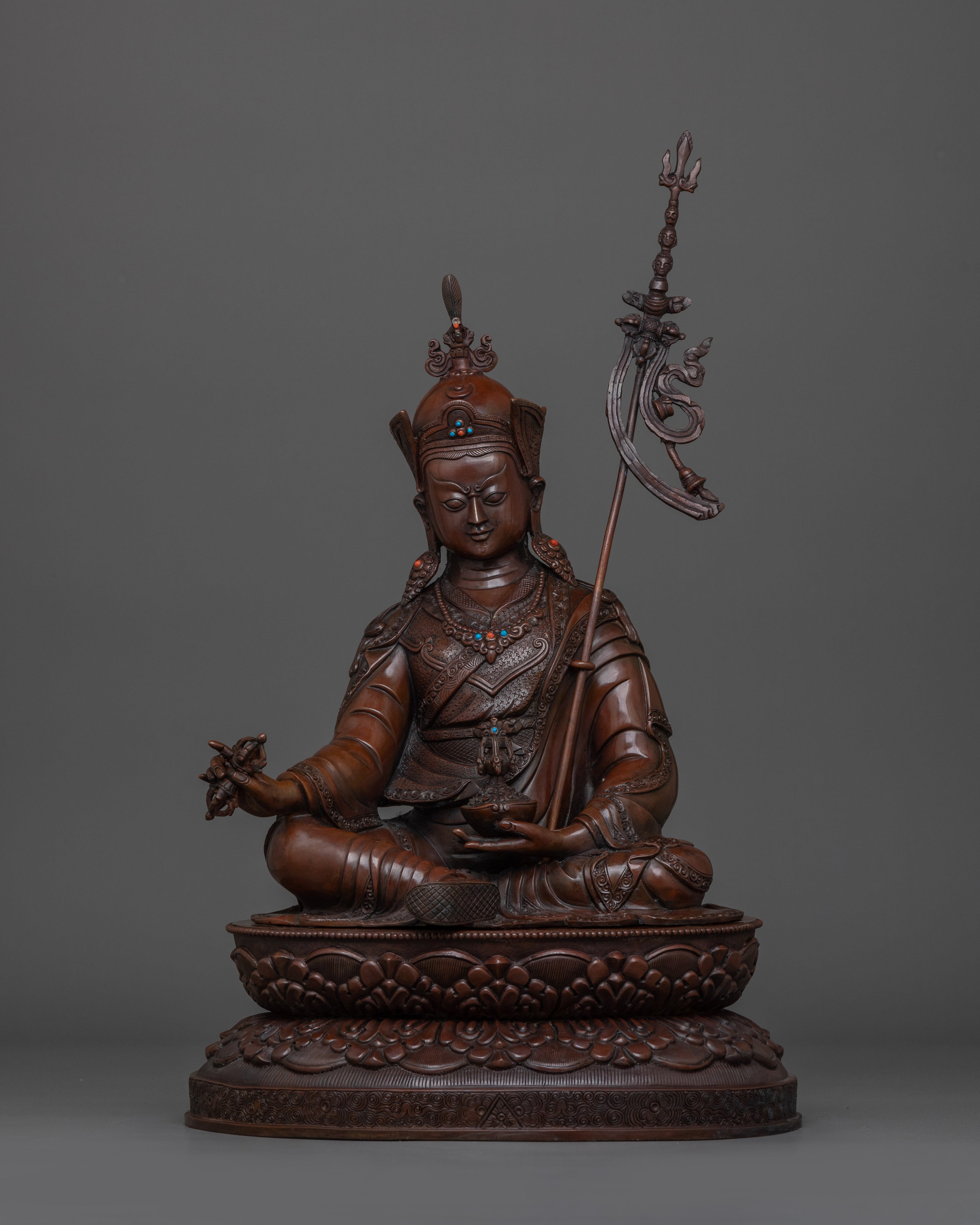Description
Handcrafted Oxidized Guru Rinpoche Tantric Master Statue | Also known as Padmasambhava
This Oxidized Guru Rinpoche Statue, also known as the Tantric Master, is 17.7”/45cm in height and 11.0”/28cm at the base. With a weight of 6.90 kg, it is crafted from oxidized copper and is suitable for both spiritual practice and decorative display. Designed by talented Nepalese artisans, this detailed sculpture is ideal for altars, meditation areas, or as a meaningful decor item for those seeking awareness in their daily life.
In his left hand, he holds a kapala, a skull cup containing the vase of immortality, symbolizing inexhaustible spiritual wealth and the wisdom that transcends life and death. In his right hand, he wields a vajra, representing indestructible clarity and unshakable insight. Resting against his shoulder is the khatvanga trident, adorned with symbolic elements, representing his tantric consort and mastery over the three realms. This staff is also a profound symbol of the Three Kayas—the Dharmakaya (truth body), Sambhogakaya (bliss body), and Nirmanakaya (emanation body)—revealing his realization of the full nature of Buddhahood. A lotus and feather crown adorns his head, symbolizing purity and the highest realization of the Buddhist view. Seated in regal posture, one leg folded and the other extended, he embodies enlightened presence and compassionate activity, a master of both samsara and nirvana.
Size: 17.7”/45cm (Height) x 11.0”/28cm (Base)
Weight: 6.90 kg
Material: Oxidized Copper Body
Long ago, as prophesied by Shakyamuni Buddha, a miraculous being would appear to spread the profound teachings of Vajrayana Buddhism. That being was Guru Rinpoche, also known as Padmasambhava, meaning “Lotus Born.” At the age of eight, he manifested from a blooming lotus in Lake Dhanakosha—not born of a woman, but appearing spontaneously, radiating wisdom and compassion. Revered as the Second Buddha, he came to illuminate the path to liberation and transform even the darkest energies into enlightened wisdom. Believed to have introduced Buddhism to Tibet in the 8th century, he is regarded as the "Second Buddha." His teachings combine wisdom, compassion, and transformative power, guiding practitioners toward liberation. Guru Rinpoche’s iconography—vajra, skull cup, and trident—symbolizes his mastery over obstacles and his ability to dispel ignorance and negativity. He is invoked as a protector and spiritual guide, offering blessings of insight and enlightenment.



